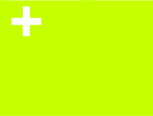de la nuit
Programme Note
The composition "de la nuit" was composed for the festival "Kryptonale 99" ( http://www.kryptonale.de ) and performed in former water tanks placed under the ground at Prenzlauer Berg in Berlin. "De la nuit" was created at the computer network of the "Centre for Art and Media" in Karlsruhe. The acoustic of the tanks are the source for the sound imagination and formal layoout of the piece. In this case the space underneath the earth was a kind of inspiration for the spirit of the work.
The sources used for the signal manipulations in this piece seem to have nothing in common with each other: a sample of instrumental play of a bulgarian folklore, a very short sample taken from a song of Massive Attack and some metal sounds which were created with the physical modelling software Genesis from ACROE Grenoble.
While the sample of Massive Attack is nearly unrecognizable the bulgarian folklore is audible counterpointing itself with transpositions. The strangest moment in the piece is the end where the folklore is reversed sounding along with some metal gong sounds. The rhythm of the gong sounds was entirely performed by the physical modelling software through a complex very slow vibrating object.
It is a special situation using a compositional object as source for a new composition. During the creation of a work out of samples there are two very exciting moments deciding about the spirit of the resulting work: first the work with the sample itself; is the sample completely destroyed or is it opposing all the modification processes; is there a new structure developed with the help of the sample or does the sample still continue to be an event? A piano event for example can be changed with different methods: it can be stretched, shortened, reversed and modified in the spectral domain and still it is one event; it can be used several times in different pitches, spatial locations, reverb amounts or it is possible to combine all these methods with each other creating a complex structure different to the former event.
The second exciting moment happens during the combination of several structures with each other. All of the structures contain a different character. Out of these patches a new entity is created with the aim to perform a new musical story or timeline. Along with the effort to combine the content of the structures to a kind of story board psychoacoustic as well as aesthetic aspects have to be taken into account. One sound or structure might cover up another one since they are in a similar frequency range. Or two processes are in the same rhythmical domain creating undesired combinations of events. These problems have to be addressed with some forms of signal processing techniques like transposition, stretching or looping. This process, combining the structures with each other, goes beyond a classical "mix" only applying modifications to amplitude and duration. As a result 90% of the created structuresare not used while a few other structures are used extensively.
Instead of calling it a mix I would consider this as a combination of interpretation (reacting onto the structures content) and compositional idea (opposing something onto the structure).
In the finalized composition the listener can judge if the piece is more than several structures added to each other. He may find a musical plot narrated throughout the piece. He may find that the sounds are able to create tension and different levels of energy, that a crescendo is more than increasing the dynamic level or that the work is more than the sounds it is made with.
De la nuit was created with the software SND, CLM (William Schottstaedt CCRMA, Stanford), Genesis (ACROE, Grenoble) und Common Music (Heinrich Taube, Illinois) and performed on SGI computers at the Center for Media in Karlsruhe.


